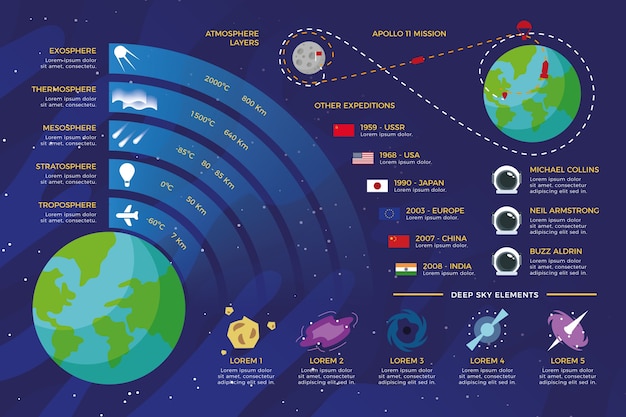Fascinating Facts about the Milky Way

The Milky Way is a barred spiral galaxy.
It is estimated to contain over 100 billion stars.
The diameter of the Milky Way is approximately 100,000 light-years.
Our solar system lies within the Milky Way galaxy.
The Milky Way is home to billions of other planetary systems.
It takes light approximately 100,000 years to travel from one end of the Milky Way to the other.
The Milky Way is surrounded by several satellite galaxies, such as the Large and Small Magellanic Clouds.
The galactic center of the Milky Way is believed to harbor a supermassive black hole.
The Milky Way is named after its milky appearance in the night sky.
The stars in the Milky Way are mainly located in a flattened disk structure.
The Milky Way is part of a larger structure called the Local Group, which includes several other galaxies.
The Milky Way has a relatively low surface brightness compared to other galaxies.
The Milky Way’s disk is tilted at an angle of about 60 degrees with respect to the galactic plane.
The Milky Way is moving through space at a speed of approximately 600 kilometers per second.
The Milky Way is believed to have formed about 13.6 billion years ago.
The Milky Way contains various types of stars, including massive blue stars, red giant stars, and white dwarf stars.
The Milky Way’s spiral arms are regions of active star formation.
The Milky Way is constantly interacting with other galaxies through gravitational forces.
Fascinating Facts about the Milky Way part 2
The Milky Way is home to many interstellar clouds of gas and dust, which are the birthplaces of new stars.
The Milky Way’s stars are distributed in a density wave pattern within its spiral arms.
The Milky Way has a halo of dark matter surrounding its visible disk.
The Milky Way’s halo contains globular clusters, which are ancient star clusters.
The Milky Way’s rotation speed increases as you move away from its center, a phenomenon known as the galaxy’s differential rotation.
The Milky Way’s outer regions are dominated by old stars, while the inner regions have a higher concentration of young stars.
The Milky Way is just one of billions of galaxies in the observable universe.
The Milky Way is constantly colliding with and absorbing smaller satellite galaxies.
The Milky Way is believed to have cannibalized several smaller galaxies over its lifetime.
The Milky Way’s stellar disk is not perfectly flat but exhibits warping due to gravitational interactions with neighboring galaxies.
The Milky Way is surrounded by a vast halo of hot gas, known as the gaseous corona.
The Milky Way’s disk is populated by open star clusters, which are loosely bound groups of young stars.
The Milky Way is embedded in a vast cosmic web of dark matter and galaxies.
The Milky Way’s central bulge contains a high concentration of old stars.
The Milky Way’s spiral arms are believed to be density waves, where star formation is triggered by the compression of gas and dust.
The Milky Way has multiple satellite galaxies, such as the Canis Major Dwarf Galaxy and the Sagittarius Dwarf Elliptical Galaxy.
The Milky Way’s rotation curve, which describes the velocity of stars as a function of distance from the center, implies the presence of dark matter.
The Milky Way has a relatively low metallicity, meaning it contains fewer heavy elements compared to other galaxies.
The Milky Way is constantly losing mass through stellar winds and supernova explosions.
The Milky Way’s disk is surrounded by a spherical stellar halo, which consists of old stars.
The Milky Way’s central black hole, known as Sagittarius A*, has a mass of about four million times that of the Sun.
The Milky Way emits cosmic rays, which are high-energy particles originating from supernova explosions and black holes.
The Milky Way’s spiral arms are not fixed structures but rather transient features that come and go over time.
The Milky Way’s disk contains multiple stellar streams, which are remnants of past merging events with smaller galaxies.
The Milky Way’s supermassive black hole is relatively quiet, with no active accretion of matter at present.
The Milky Way is part of the Virgo Supercluster, a larger structure that contains thousands of galaxies.
The Milky Way’s existence is a testament to the incredible scale and complexity of the universe.
